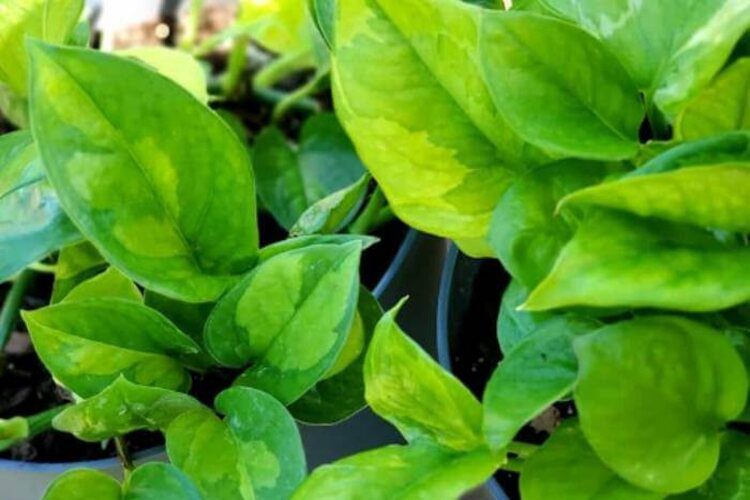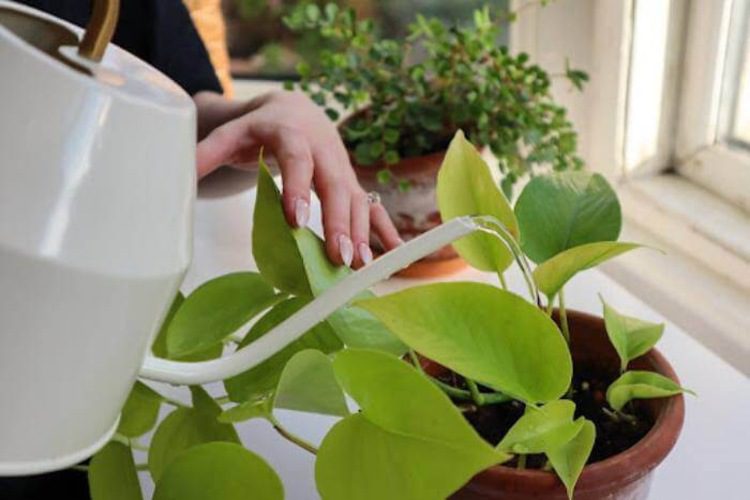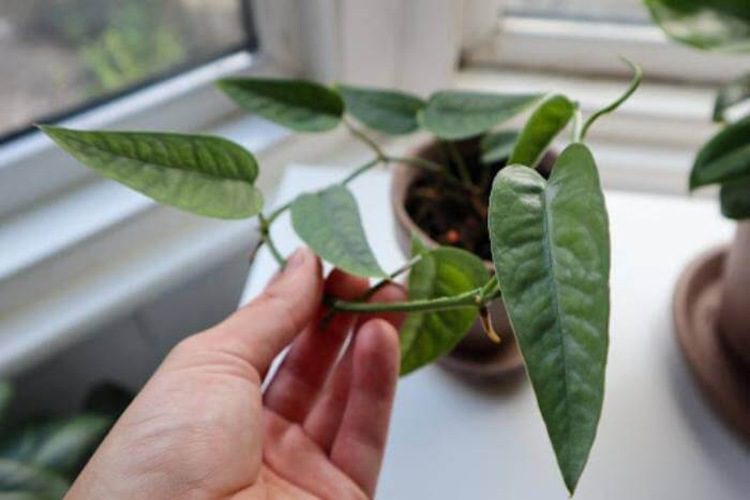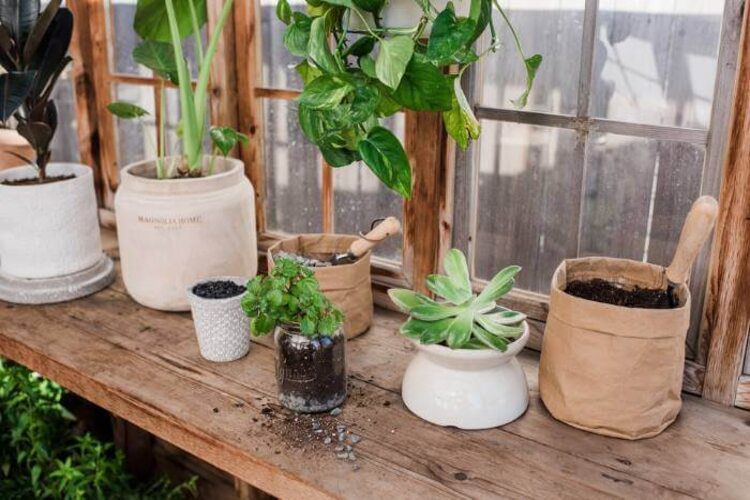Root Bound Pothos Troubleshooting: Tips For Beginners
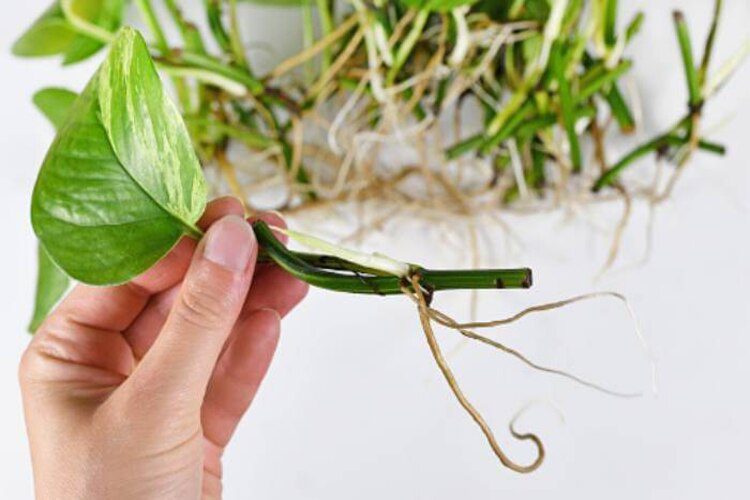
Growing your lovely Pothos plant in a small pot will be an excellent solution to saving your home space. However, over time, you will notice some problems with your tiny pot. Because of the limited space, your Pothos plant will get rootbound. Your plant doesn’t like it, as a pothos root ball needs sufficient space to develop and benefit the whole plant.
Luckily, you can fix the issue. Let’s learn the best tips for troubleshooting root-bound Pothos from our ultimate guide!
Why Do Your Pothos Get Root Bound?
Pothos plants are tropical species that thrive in subtropical environments. In the wild, they have abundant soil for the root ball to extend and grow naturally without restrictions. However, Pothos plants will go into survival mode if we keep them in a very small pot. This Pothos problem will prevent your Pothos plant from growing bushy because of a lack of supplies and space. As a result, it will choke itself, leading to a root-bound situation. Compared to other plants, some are more likely to get root-bound. For instance, plants with a tendency to grow many roots or those that grow quickly are more susceptible to root bound. The pothos plants fit both of these groups.
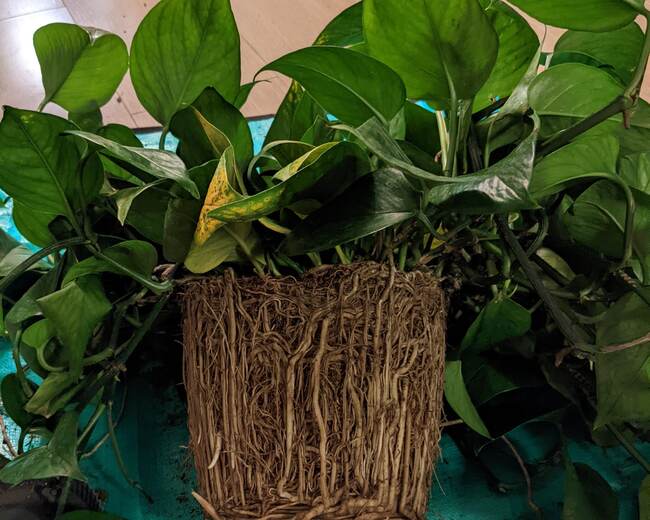
What Is It Like When Pothos Get Root Bound?
Before digging into the solution, let’s see what a root-bound pothos plant looks like. Once you detect any signs, take immediate action to save your plant.
Signs of root-bound
Here are some symptoms of root bound to check for:
Extremely parched soil
The plant’s roots that spilled and stirred inside the pot may eventually affect the potting soil. Therefore, if the soil becomes parched, you may have a root-bound pothos plant. Over time, the soil will also lose some of its nutrients, harming your root-bound plant. Consider repotting your plant if the soil is too dry or lacks nutrients.
Roots sticking out of drainage holes and topsoil
Check for unusual root development patterns if you feel that your pothos plant is potbound. The surface of the potting soil, for instance, can have a large group of roots coming out of it. On the other hand, the root balls of a root-bound pothos plant may be so tightly packed that portions of them start to poke through the drainage holes.
Root-bound causes plants to suffer
Root-bound plants can’t get enough nutrients and water. As a result, they have the following problems:
Stunted growth
Your pothos plant’s growth rate may also determine whether it is root-bound. A healthy plant will develop steadily, while a root-bound plant will encounter stunted growth. To check the growth rate of your plant, you may compare it with other plants. Otherwise, recall how fast it could grow. If you notice a decreased rate, your plant may be pot-bound.
Leaves turning brown
Due to insufficient nutrients, moisture, and oxygen at the pothos roots, the leaf colour of a root-bound plant may change. Discoloration occurs at the tips first, causing the leaves to turn yellow and then brown. Then, this effect spreads through the entire leaf.
Leaves wilting
Since root-bound plants have difficulty collecting water, the leaves may appear dried up, resulting in curling leaves. Finally, they will drop off.
Pest and disease susceptibility
Root-bound Pothos plants are more susceptible to pests and diseases due to compacted roots blocking drainage holes, resulting in prolonged soil wetness.
How To Save Your Root-Bound Pothos?
Repotting and division are the two best methods to save a root-bound pothos plant. Here is how to perform each task on the plan.
Repot the root-bound pothos
The pothos root ball will have more room for growth if you transfer it to a larger container. We call this treatment “repotting.” A bigger container will provide a place for more soil, giving the pothos roots the nutrients they need to develop quickly and healthily. You’ll need a new pot, fresh potting mix, and some water to get started. The new pot for the root-bound plant has to be about two to three inches bigger than the old one. However, you should be careful when repotting a root-bound Pothos plant, as the fragile roots may break or damage the leaves, causing some holes in the leaves.
The next step is to transfer the Pothos once you have selected the pot. Here are some easy steps to take:
Step 1: Carefully remove your pothos plant from its pot. Take extreme care not to harm the pothos roots.
Step 2: Lightly brush off the soil to see the roots clearly. Then, check for potential issues like root rot.
Step 3: Before replanting, you must untangle or loosen any compressed roots. You can do it by carefully massaging the roots.
Step 4: Put fresh soil in the new pot. Only add enough soil for the plant to hold steady in the pot.
Step 5: Before replanting, gently wet the soil. You may buy all-purpose potting soil or create your own by mixing perlite and peat moss in equal amounts.
Step 6: After adding soil to the pot approximately halfway, add your pothos plant. Add a little more soil to cover the roots thoroughly.
Step 7: Thoroughly water it after adding soil to the pot’s full capacity. Avoid compacting the soil excessively, as it might interfere with drainage.
It’s essential to monitor your pothos plant once you’ve transplanted it. Your plant may feel stressed within the first few days after the treatment, so provide it with extra TLC when necessary.
Divide the root-bound pothos
Root division is one of the best techniques to save a root-bound pothos plant. With this method, your collection of plants will also grow. While splitting the root ball might aid in encouraging new development, you should not injure it. Before splitting, try using your fingers to untangle any twisted or compressed roots. Also, only use clean tools for splitting the root ball and stems of the readily impaired Pothos, including those with scales on Pothos. If your pothos plant has scales, it is important to remove them before dividing the plant. You can use a cotton swab dipped in rubbing alcohol to remove the scales. Clean tools can also help you cut dead and damaged roots without hurting other parts.
The instructions for dividing a root-bound pothos are as follows:
Step 1: Water the root-bound item thoroughly a day before the division to loosen up the potting mix.
Step 2: Remove the plant from the pot carefully. A root-bound pothos should have trouble staying together because the roots have packed the ball.
Step 3: Split the stems and roots with a sterilized knife or pair of garden shears.
Step 4: Prepare to transplant the split roots and plants into new pots by separating them from one another.
Step 5: Fill the new pot with the right potting mix; do not load it with soil mix, as adequate watering requires at least an inch of space.
Step 6: Place each of the split plants in their pots. To aid in the recovery and development of the plant, you may amend the potting mix with some fertilizer.
Step 7: After planting, water your pothos since it gives the roots sufficient moisture to minimize stress.
Extra tips for preventing root-bound
It would be best to prevent rootbound from happening. Here are some tips that every Pothos’ parent should know:
Repot after two years
Repotting is an effective way to control pothos’ development. So remember to repot your plant once every two to three years if it is flourishing in a tiny pot. To give the roots more space to expand, replant them in a pot that is at least two inches bigger and deeper than the old one.
Trim the plant regularly
You should uproot your pothos plant every year and trim the roots with a sterilized pruner instead of waiting until you have a root-bound pothos plant. When pruning, take care not to overstress your plant.
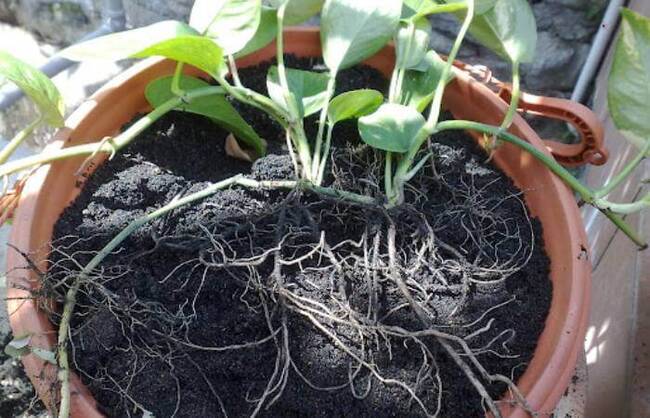
Conclusion
A root-bound pothos plant will have tonnes of problems in its development, such as wilting leaves and a slow growth rate. But do not let your miserable pothos die. Instead, check for signs of the problem carefully and perform immediate treatment to save it.
Hopefully, you will find this guide helpful. Share it with your friends if they have the same root-bound issue. Thank you for reading, and see you in the next post!
FAQs





